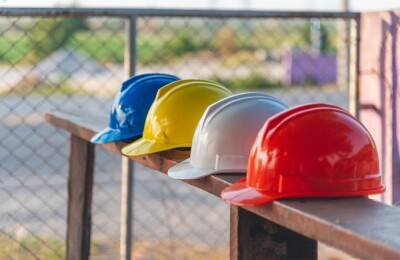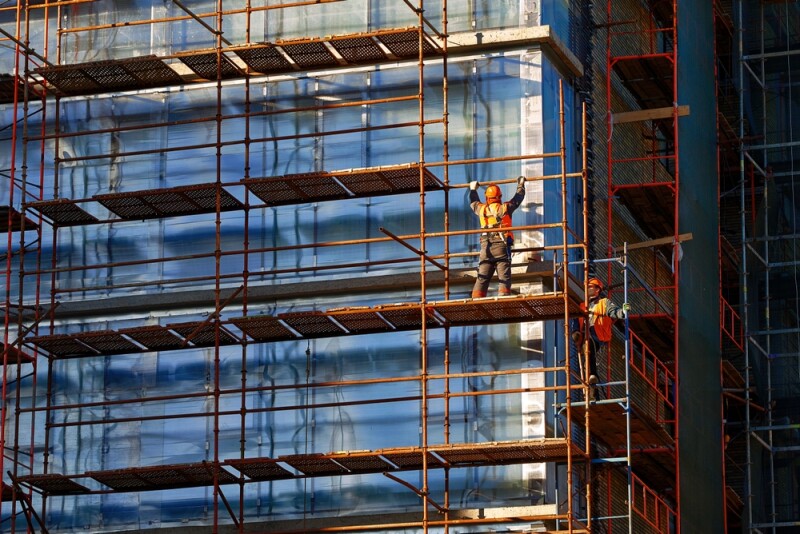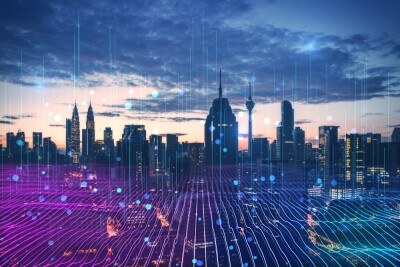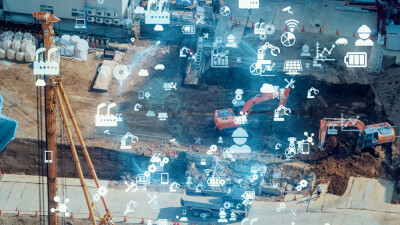Over the last couple of years since the release of OpenAI’s initial release of ChatGPT, nearly every industry around the world has been working on figuring out how they can leverage artificial intelligence to improve their workflows. That includes all forms of AI and machine learning, but generative AI like the aforementioned ChatGPT have taken center stage. Construction has been no exception to the AI boom, and while it’s still not clear exactly what the place of generative AI will be in the sector, leaders are eager to not be left behind here as they have arguably been with other forms of technology in the past.
We’re now starting to see companies from around the AEC industry start to showcase new offerings based on artificial intelligence, covering all portions of the workflow. One particularly interesting example, which directly benefited from these broader developments around generative AI, comes from DroneDeploy. At the beginning of this month, the reality capture company announced the release of their new Safety AI solution, which comes as an add-on to the DroneDeploy Ground product.
This tool looks to solve one of the biggest issues on construction sites, which is ensuring it is a safe environment for the workers and that said workers are taking all required precautions to keep the site safe. As they note in their release announcing the launch, the United States saw over 167,000 lost-time injuries recorded in 2022 alone, according to the Bureau of Labor Statistics. Safety AI takes the images that are already captured throughout a construction project and detects all visible safety risks according to standards from the United States Occupational Safety and Health Administration (OSHA), ranking them based on severity and automatically informing the project’s safety team.
Philip Lorenzo, DroneDeploy’s Director of Product for Artificial Intelligence, told Geo Week News that this is the company’s first AI agent, and that the company was in a unique position to develop this kind of product given all of the imagery their customers have long collected on the platform.
Lorenzo, who previously founded StructionSite, which was ultimately acquired by DroneDeploy, has been working with AI for years now, and says that this kind of tool was only really possible within the last 12 months or so. But right when it was, the DroneDeploy team worked to make this kind of safety-based agent.

“The technology to make something like a Safety AI, this level of an AI agent that can look at images, wasn’t available more than 12 months ago,” Lorenzo said. “As soon as it was available, it was a sprint to make it work with our machine learning and photogrammetry models. Honestly, there’s many years of machine learning and a decade of photogrammetry that it’s built upon.”
The biggest challenge for the DroneDeploy team was to get the model to really identify the true issues rather than simply finding assets. Lorenzo gives an example of a system being able to identify five ladders on a job site – something that is not much of a help to a project team – versus being able to determine that two of them are in a position that can cause injury.
“What people actually want,” Lorenzo tells Geo Week News, “is why and where things are unsafe a lot more than just where things are.”
One of the keys for the DroneDeploy team was to make sure that not only was the information being gleaned from Safety AI valuable to the end user, but that the right people were getting the information and at a cadence that makes sense. Project superintendents and safety managers are already inundated with massive amounts of messages and emails, so there was a conscious effort to make sure that only the relevant staff is receiving reports, and that they come in as a full report rather than with every potential alert.
With any product leveraging AI, there is always a concern around the potential for job loss with functions being automated. Lorenzo anticipated that DroneDeploy could hear those complaints from safety managers, but that actually hasn’t been the case. Instead, he says, they “seem to unequivocally love it,” and that they’ve been the “biggest champions.”
Instead, the pushback has been more from younger and less experienced superintendents, who are initially skeptical about what seems like another set of eyes scrutinizing their site. Lorenzo says that the fact that the reports only go to pre-selected team members, and that they are simply following OSHA standards has been the response to these potential issues.
As with any AI product, this is simply the first iteration of Safety AI, and Lorenzo notes that there are some future upgrades in the works. For example, today the software only includes imagery coming from 360-degree cameras since most of their customers are leveraging these tools already and they give a good view of the job site, but adds that they’ll add additional sources in the future. Additionally, the reports are based on OSHA today – which is of course U.S.-centric – but that they will add standards from international bodies for those customers eventually as well. In the meantime, however, OSHA’s standards do overlap quite a bit with other similar organizations’ around the world.
For now, DroneDeploy hopes that their first foray into the AI agent realm will result in safer standards. Given their technological know-how and the reality capture data already being collected by their customers, Lorenzo says that it was essential for the company to create this kind of tool as soon as they were reasonably able.
“As soon as OpenAI started to go multimodal – which means they can see pictures, the first thing we needed to do was make the world safer and make job sites safer,” Lorenzo said. “It’s almost like we had a moral obligation to do that.”






